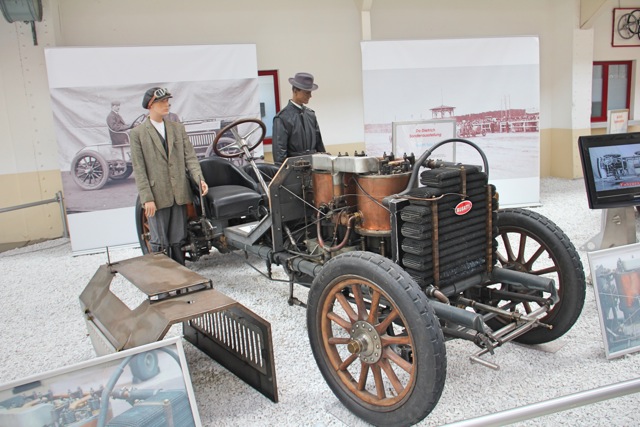by Alexander Jentzsch
During my holidays in the wonderful region Breisgau (Germany) and Alsace (France) I made a stop in Speyer, which is located between Frankfurt and Strasbourg. The museum of technology in Sinsheim once built an annex for their exhibits and picked Speyer for the location. It gradually expanded to become another great exhibition, stuffed with cars, planes, boats and locomotives. Even an original Buran can be found there. What is the Buran? I will show you in a minute. First things first.
Before you reach the museum, several aeroplanes on stilts can be seen from far away . Entering the hall after you bought your tickets might overwhelm you, because every single room is stuffed with exhibits: motorcycles are standing between old trains, a WW I plane (Fokker Dr.I) hangs from a wall, a boat is waiting in the left corner of the building, various mechanical organs standing amongst the tons of cars and fire engines!

Please keep in mind that there’s another hall and a big outdoor area as well, so take at least half a day to explore the museum, better more.
I started my tour on the left side and explored the first hall clockwise. Here you can see one of the extraordinary Mercedes-Benz Knight, often forgotten in the history of cars. I love the sleevevalve engine a lot because they produce a lot of torque at low revolutions. This car hast just 4 cylinders but 4 liters of displacement – wow!
Not quite as imposing, but even more advanced, is a white Mercedes G5 from 1938. Unfortunately many inventions remained unexploited and forgotten in the post-war confusion. The car was already equipped with four-wheel drive, limited slip differential, all-wheel steering, coil springs and pontoon body. You could turn it in a circle of 7 meters only!

Not far away, another Mercedes shows off: the 630 with Park-Ward body with brass accessories and a huge hood, covering its 6-cylinder in-line engine.
Right behind, one legend of WW II is waiting: The last existing Messerschmitt 109 G-4. An aviation adept will confirm that this is the most beautiful version of the ME 109: aerodynamic and smooth, not misshaped by the bulges in the skin for the bigger cannons of the later series. However our time travel leads us back a few years before: the De Dietrich Bugatti shows how an engine coolant system can be designed. A short video let us hear the sound of the copper-covered engine.

Nearly the complete right side of the hall is reserved for fire engines. I have to admit that I’m not such a great fan of these. However some vehicles amazed me. Beginning with the Mercedes 300d “Adenauer” which obviously must have been the car for the fire chief in one of the bigger cities… although?… it was shipped to a voluntary fire brigade of a small town that had a population of just 2300 people! Unfortunately there was no way to read the mileage meter.
In the fifties it was quite normal that there were companies building fire trucks only. The “Rolls-Royce” of fire engines at the time was the Ahrens-Fox. Its model “H-T” with a 6-cylinder engine did 450 hp out of 16 liters. If you take a good look at the big truck, the engine hood appears to be quite tiny compared to the rest of the car and the huge water pump in front of it.
On rare occasions, or nowhere else, you will find the next jewel: A Delahaye special vehicle from WW I with two overdrive winches. It was used to launch and haul-in balloons. German balloons were operated by horse and cart, whereas the French army tested powerful cars for quick deployment. Most of these cars were broken up, but this one was lucky as it had a famous 60 hp racing engine that already was used at the Paris-Madrid Race in 1907. Due to the good design of that engine, the car was stored for spares, just in case.
There are two other funny cars I want to mention: probably the smallest double-decker bus, based on the legendary Morris Mini and a huge chimera Faun “Zugmaschine”, which could be operated to run on the street as well as on railroad tracks, to pull heavy loads up to 20 tons.
As the last exhibit of hall 1 I want to show you an aircraft engine: the Jumo 211. 35.5 liters were subdivided into 12 cylinders that produced 1220 hp. Noteworthy is that it was powered by direct gasoline injection and each cylinder had 3 valves. This sounds as if we’re speaking of a car that’s not older than the year 2000. However this engine was constructed 1937!
To be continued

